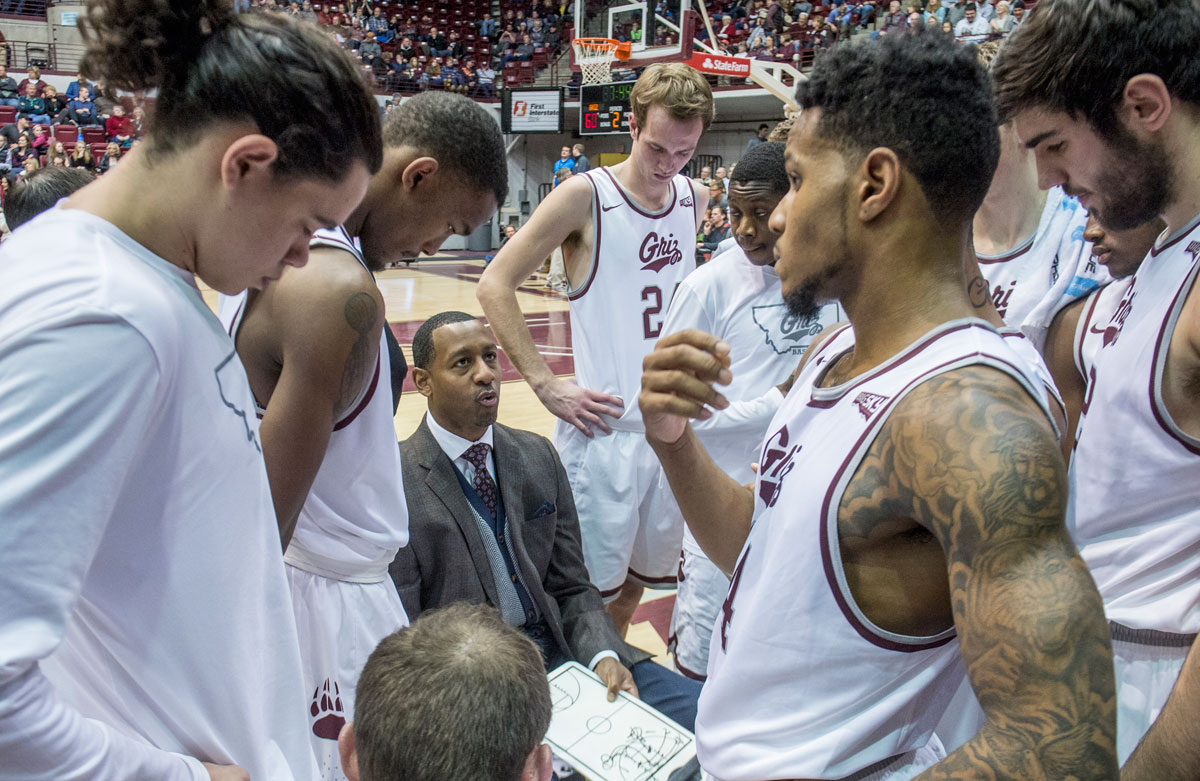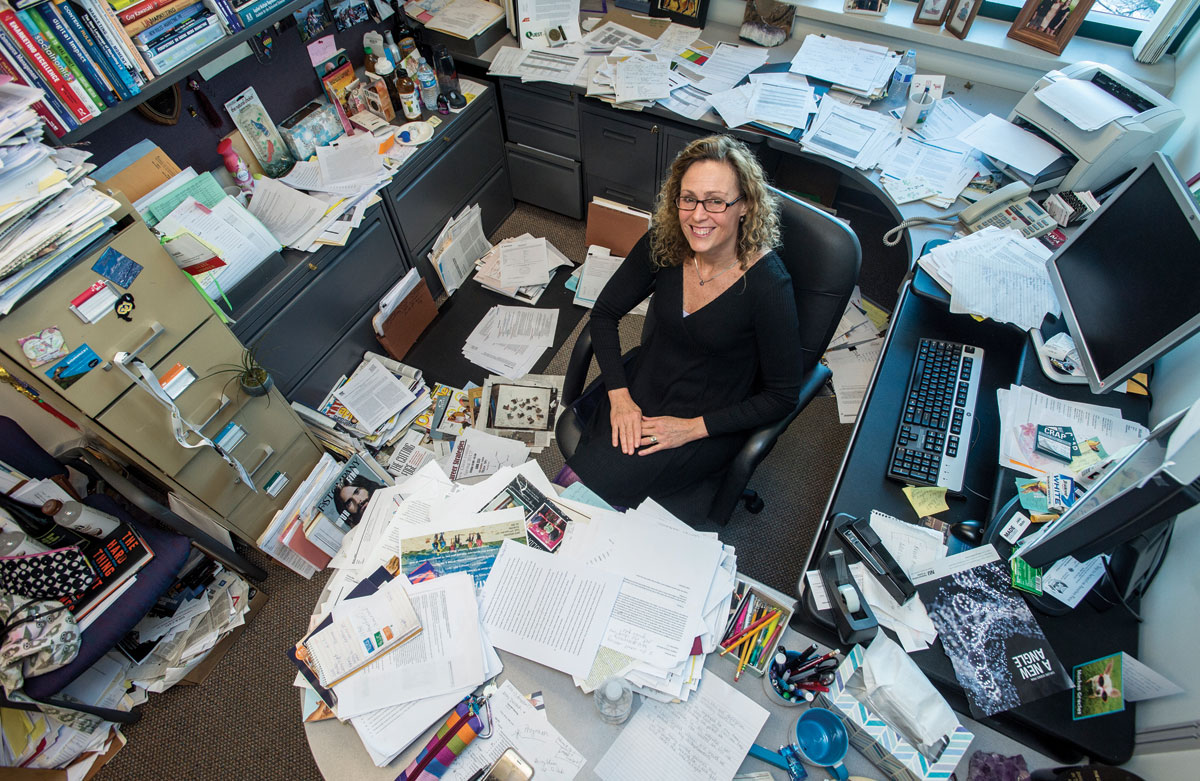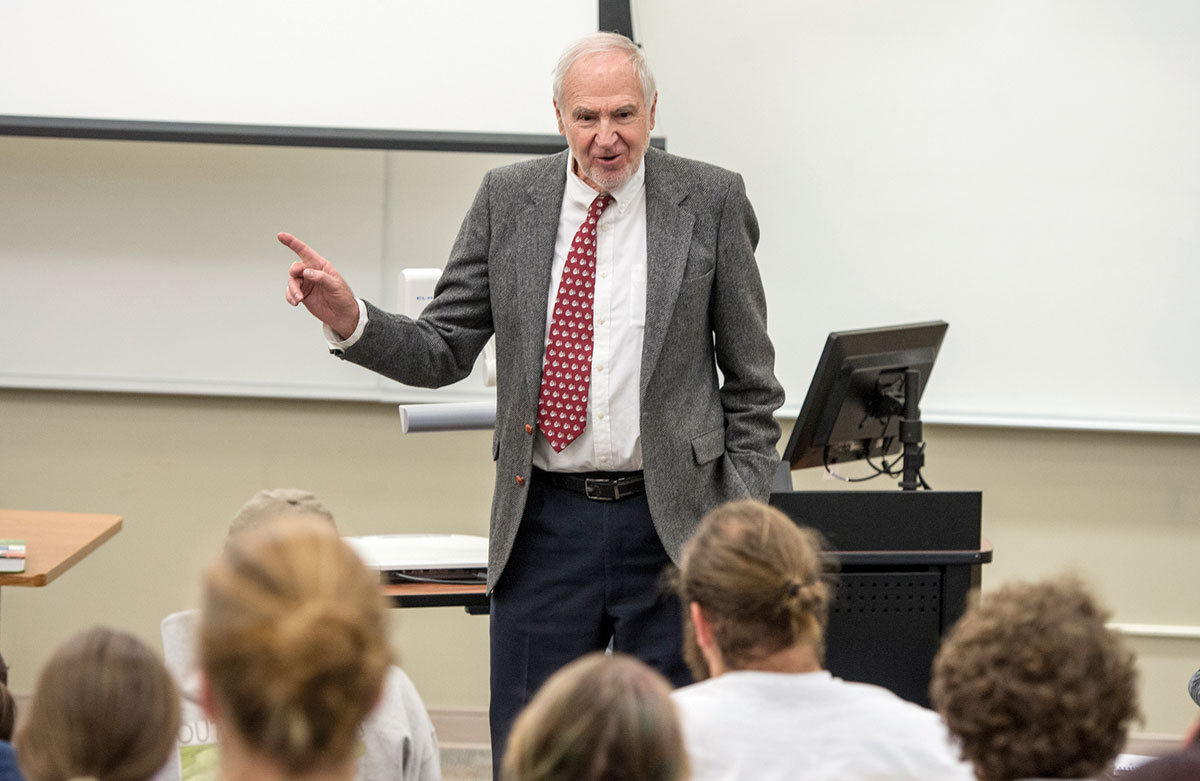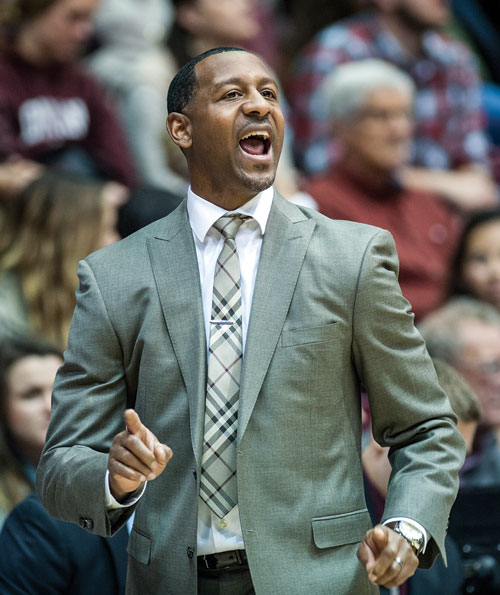We asked faculty members for their input on what it takes to be great in the classroom.
Sara Rinfret, Assistant Professor of Political Science
In your opinion, what are the two most important characteristics a great teacher/educator possesses? Why?
- To be a good listener and meet students where they are (e.g. use of technology in the classroom, different style of teaching). I recently conducted a study on how class format (online, hybrid, in-person) impacts how a student (gender, etc) might affect their participation. This clearly demonstrated the importance as an educator that I push myself to meet students where they are so they have the tools necessary to excel upon graduation.
- To stay up to date in my field so I can demonstrate the connections between theory and practice so students can understand what they are doing in the classroom has real-world implications upon graduation.
In your opinion, what are the two most important characteristics a great student/learner possesses? Why?
- A willingness to listen to others – this is so important in the fields of public administration and political science. We are often taught that politics creates an “us-versus-them” mentality, but if students are willing to listen to all sides, then solutions can be formulated to tackle contemporary problems today and tomorrow.
- An excitement for learning and the desire to push themselves. College can be difficult for students because they are working 40 hours a week and reading vast amounts of materials for all of their courses. But, reading and engaging in materials can be exciting if they push themselves to think about the real world implications.
Who is your favorite teacher? Why?
Dr. Debbie Halbert – my undergraduate advisor who pushed me to pursue a MPA and then eventually a Ph.D. I was a very quiet student from rural Ohio and she constantly encouraged me to push myself. I wouldn’t be where I am today without her and believe in paying it forward so students can benefit from experiences like I have.
What inspires you to teach?
My students and the fields of public administration/environmental policy. Daily, I am able to connect how theory informs practice or vice versa in the classroom, through research, or on campus. I love my job, the students I get to work with, and the UM/Missoula communities.
Tobin Miller Shearer, Associate Professor of History, African-American Studies Director
In your opinion, what are the two most important characteristics a great teacher/educator possesses? Why?
- The ability to inspire curiosity and a love of learning; and
- A passion for and deep knowledge of the topic under instruction. Why? In the classes I teach, I have the opportunity to pass on knowledge about history, religion and race, but – even more importantly – I have the opportunity to model what I call the “seeker stance” – an orientation to learning that searches for more than is offered, looks behind the surface and asks the difficult questions.
In your opinion, what are the two most important characteristics a great student/learner possesses? Why?
- A thirst for knowledge itself that extends beyond letter grade achievement; and
- A willingness to have one’s worldview challenged. Why? As much as I find grades a regrettable necessity to keep students motivated and on task, the students who excel in my classes and who go on to the greatest success after graduation are those who develop an intrinsic interest in the subject of study. Likewise, those who are willing to have their world view challenged are most likely to develop the seeker stance I describe above.
Who is your favorite teacher?
My 11 and 12th grade high school physics teacher George Butwin required me to work harder, think deeper and deal with greater complexity and nuance than any other instructor I encountered prior to grad school. Although I don’t teach in the sciences, I aim to exemplify the same standards of excellence in all the humanities courses that I offer at UM as did George Butwin in the science courses he taught at E.L. Meyers High School.
What inspires you to teach?
The students in my classes who stump me with their questions, dazzle me with their insight and amaze me with their research. Every day I get to work with them is a good day.
Robert Stubblefield, Lecturer, Department of English
In your opinion, what are the two most important characteristics a great teacher/educator possesses? Why?
Passion and commitment to the students and subject. I think it’s important to remember that teaching/learning is a dialogue rather than a monologue. Most of what I’ve learned about teaching has come from students and their passion for and interest in the written word and how it relates to and affects their lives.
In your opinion, what are the two most important characteristics a great student/learner possesses? Why?
Obviously motivation is the number one characteristic, and I’d rate flexibility second. One of the most important gifts or characteristics a student can possess is the ability to benefit from myriad teaching styles and approaches. I don’t think I appreciated that early enough in my student experience, but I certainly do in retrospect.
Who is your favorite teacher?
Probably Craig Lesley, my first Creative Writing instructor in college. Craig didn’t offer any illusions that being a writer would be easy, but he provided timely encouragement and reassured me that writing and teaching would be a rewarding path if I pursued it with energy, conviction, and persistence. I hope to offer my students the same. I’ve been fortunate to have a series of wonderful teachers beginning in the first grade.
What inspires you to teach?
I’ve enjoyed teaching from the first day, and I appreciate that it offers new challenges to overcome and new problems to solve every day. It’s impossible to be cynical when you share the classroom with the type of students we meet each semester. It frustrates me when people talk about the “real world” as opposed to academia. What could be more real than sharing a space and a significant portion of your life with group of intelligent, motivated, and passionate readers and writers? That kind of community strikes me as about as real as it gets.
Dennis Swibold, Professor, School of Journalism
In your opinion, what are the two most important characteristics a good teacher/educator possesses? Why?
The best are more than smart. They are enthusiastic, endlessly curious and unafraid to admit what they don’t know. Asking students to join you in learning something is a great way to teach.
In your opinion, what are the two most important characteristics a good student/learner possesses? Why?
The best always want to know what’s around the next corner and how to do things for themselves. Enthusiasm and persistence usually trump sheer brain power. The best students never stop asking why.
Who is your favorite teacher? Why?
I’d have to say my mom, Jean Colton, above all. I grew up in a military family that was constantly moving across the country and the globe. She researched every new assignment with such joy and curiosity that it made every move seem like a grand adventure. Looking back, I know how hard those transitions actually were, but she met the challenges by provoking me and my siblings to learn everything we could – and to share it. That proved to be an excellent method for making a journalist. Since then I have taught alongside some of the best teachers I’ve ever known, people like Robert McGiffert, Carol Van Valkenburg and my colleagues today. They were and are endlessly enthusiastic and curious about learning. It’s infectious. They talk about teaching constantly.
What inspires you to teach?
I love watching the light bulb come on, the glimmer of recognition, when something finally sinks in. Students inspire me to teach, and I’ve learned to never underestimate the effect you may be having on students both in and out of class.
Julie Biando Edwards, Associate Professor, Ethnic Studies Librarian & Diversity Coordinator, Maureen and Mike Mansfield Library
The most important characteristic for both students and teachers is curiosity. That desire to know more, to learn more, is the best trait we can take into and out of our classrooms. Curiosity means we keep asking questions, keep revising ideas, and keep reimagining the world around us. It also means that we’re open to learning about our place and ourselves in the context of our disciplines and each other – so what can I learn not only about what I’m studying, but about myself in the process?







 DeCuire, who graduated from UM in 1994, was a stellar point guard for the Griz. He set the school record for assists with 435. After graduating, he worked as a youth counselor in the Seattle area, then took a job as an assistant hoops coach at Mercer Island High School – his alma mater – for his old coach, the legendary Ed Pepple.
DeCuire, who graduated from UM in 1994, was a stellar point guard for the Griz. He set the school record for assists with 435. After graduating, he worked as a youth counselor in the Seattle area, then took a job as an assistant hoops coach at Mercer Island High School – his alma mater – for his old coach, the legendary Ed Pepple.